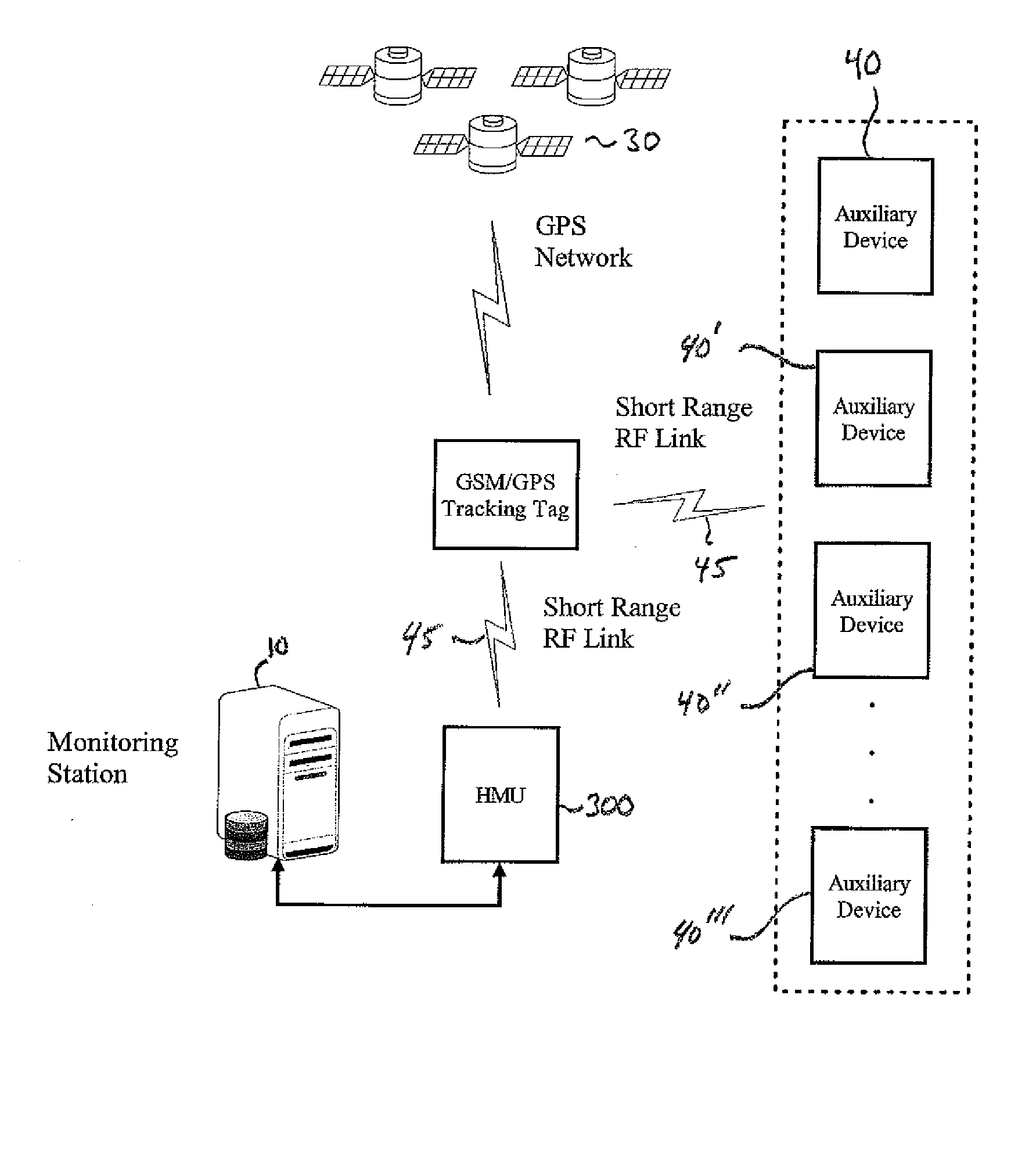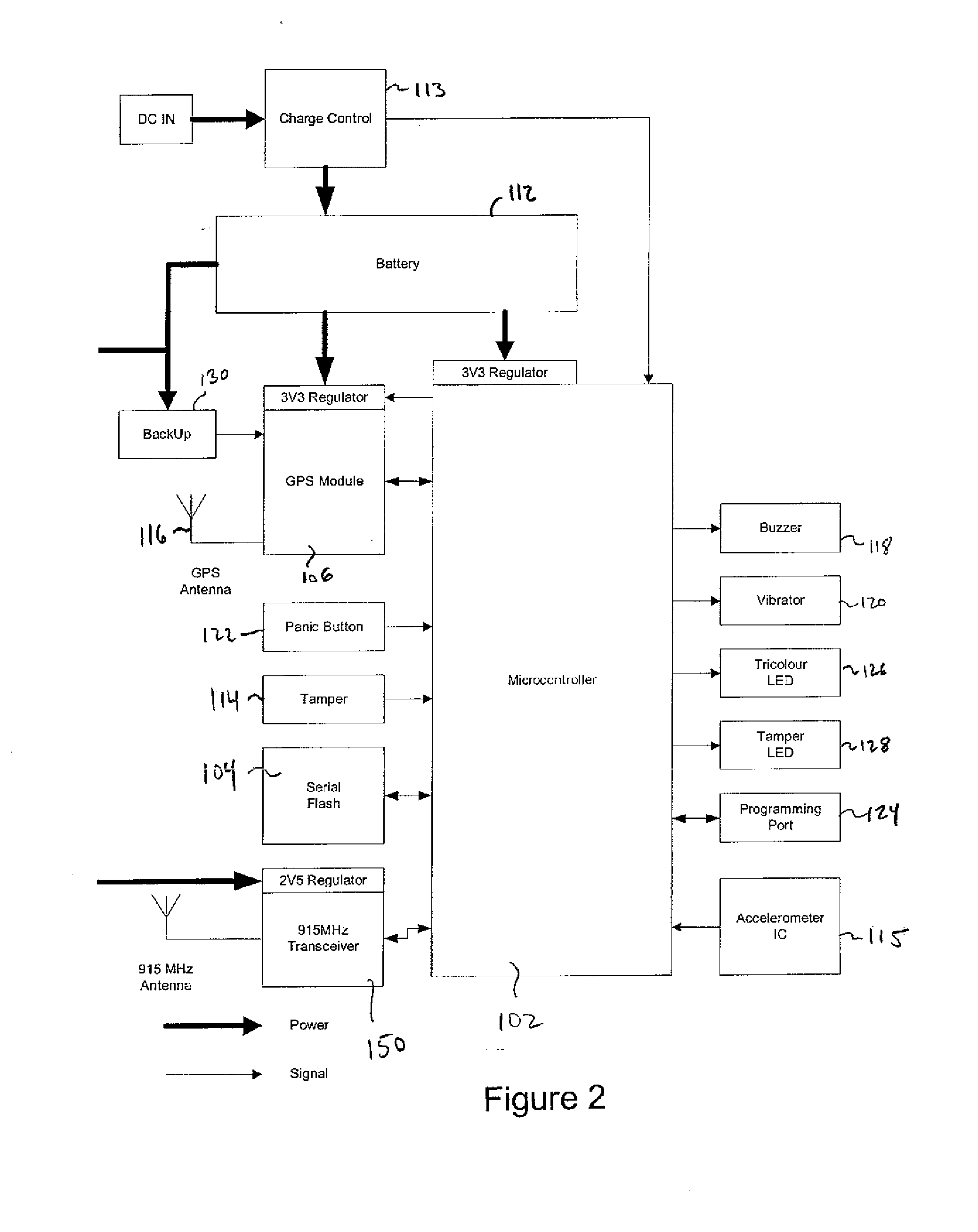Active Wireless Tag And Auxiliary Device For Use With Monitoring Center For Tracking Individuals or Objects
a technology of auxiliary devices and wireless tags, which is applied in the direction of individual entry/exit registers, instruments, high-level techniques, etc., can solve the problems of limited ability of tags to properly function, limited range of hmu, and limited range of tracking systems of this type, so as to reduce battery consumption, minimize contention, and expand the range of hmu
- Summary
- Abstract
- Description
- Claims
- Application Information
AI Technical Summary
Benefits of technology
Problems solved by technology
Method used
Image
Examples
Embodiment Construction
[0021]FIG. 1 shows a block diagram of a system in accordance with the invention. The system includes a central monitoring system (CMS) 10, a tracking tag 20 operable to communicate with a Global Positioning Satellite (GPS) network 30 and one or more auxiliary devices 40. The strap or tag may incorporate tamper detection using a variety of well-know technologies. The tag 20 can be attached to an object or individual using a strap or other suitable means of connection. For example, the tag can be attached to a package that is being transported from one location to another. In the alternative, the tag can be attached to in individual under “house arrest” that being monitored for compliance. Numerous other scenarios can be envisioned without departing from the scope of the invention.
[0022]The tag 20 communicates with the GPS network 30 and a wireless network 25 to respectively obtain geographic location information and to exchange data with the CMS 10. The CMS monitors the location of t...
PUM
 Login to View More
Login to View More Abstract
Description
Claims
Application Information
 Login to View More
Login to View More - R&D
- Intellectual Property
- Life Sciences
- Materials
- Tech Scout
- Unparalleled Data Quality
- Higher Quality Content
- 60% Fewer Hallucinations
Browse by: Latest US Patents, China's latest patents, Technical Efficacy Thesaurus, Application Domain, Technology Topic, Popular Technical Reports.
© 2025 PatSnap. All rights reserved.Legal|Privacy policy|Modern Slavery Act Transparency Statement|Sitemap|About US| Contact US: help@patsnap.com



